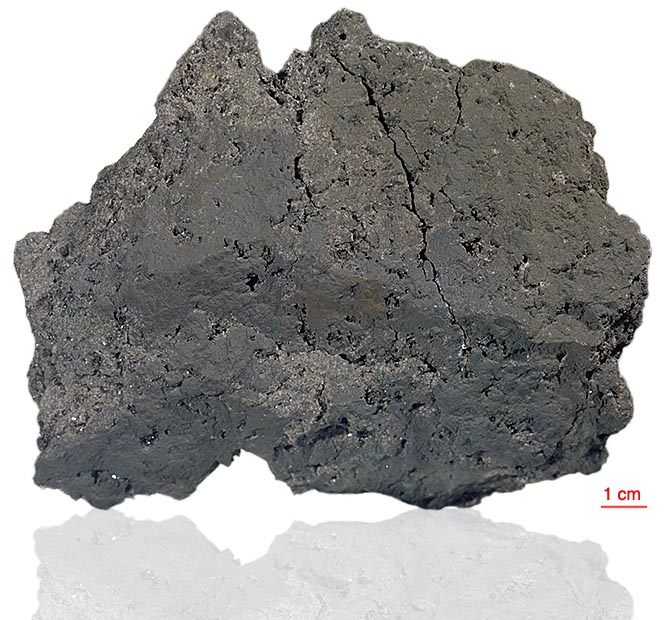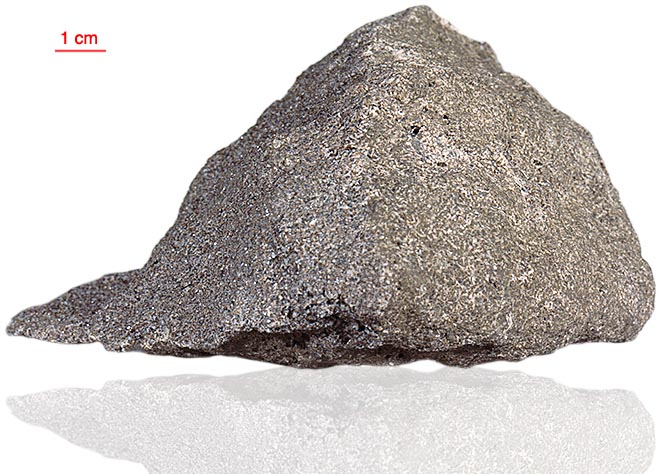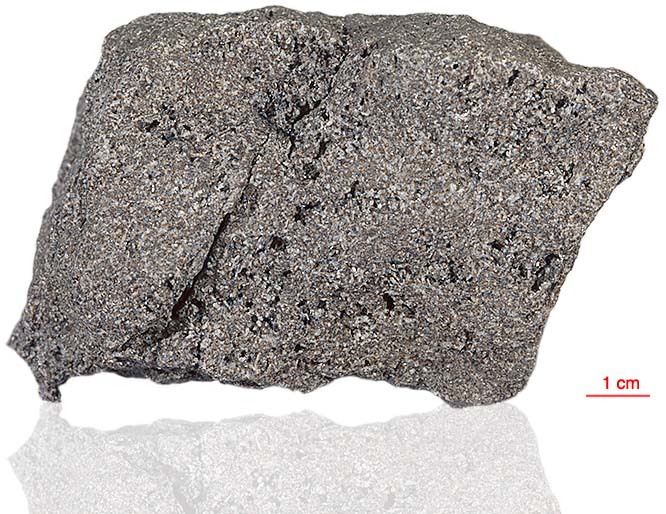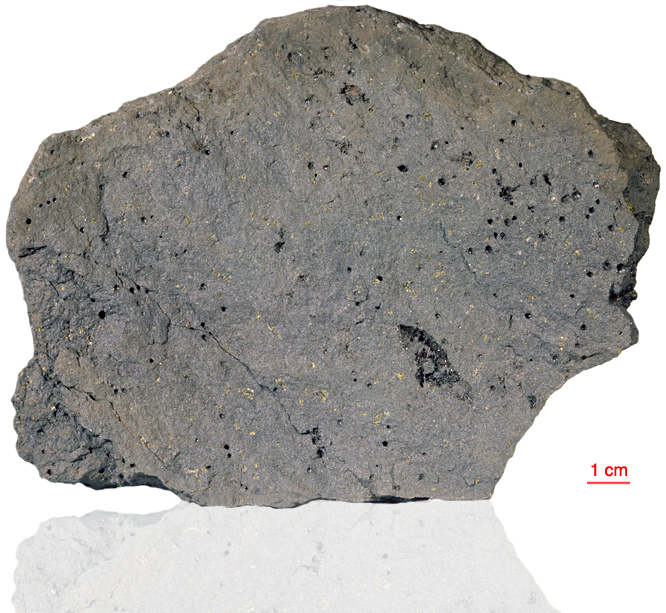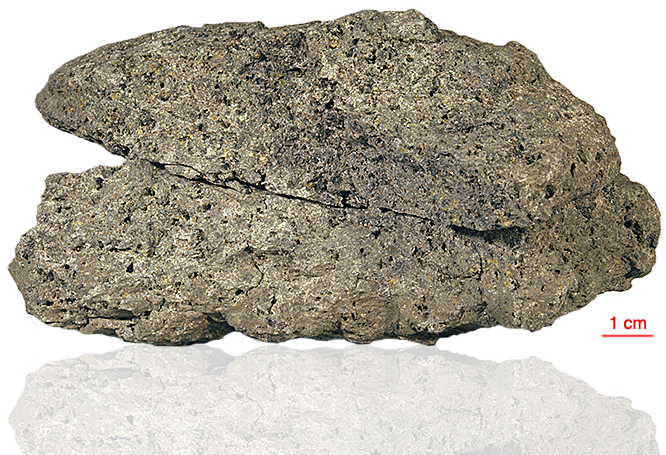79155 (66) Shocked Basalt
Collection:
Apollo 17
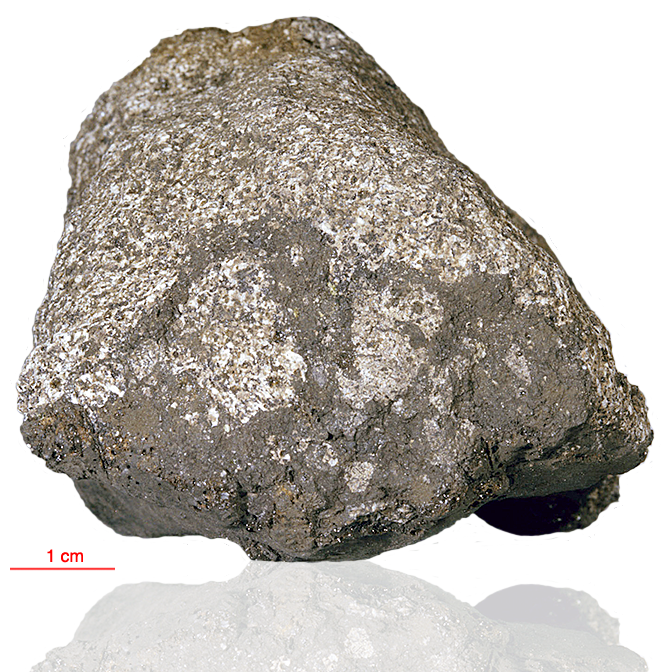
Click the microscope button to view a
thin section for this sample.
MicroscopeClick the microscope button to view a thin section for this sample.
MicroscopeFact sheet
79155 (66) Shocked Basalt
| 79155 was probably a glass-covered “bomb” thrown out by a small impact. It sat on the lunar surface and the glass on the exposed side was apparently eroded away by micrometeorite bombardment. The main portion of the sample is a mildly-shocked coarse basalt (or gabbro) with large grain size (2 mm). Ilmenite contains spinel and rutile exsolution. Both pyroxene and plagioclase have undulose extinction and there are stringers of glass (see rotation 1) throughout the thin section indicating shock melting. The sample weighed 318.8 grams before analysis and has been dated at 3.80±0.04 billion years (Ar/Ar). Further details of this and other Apollo samples are here: http://curator.jsc.nasa.gov/lunar/ |
About this collection
Apollo 17, the final manned landing mission, had two objectives: to obtain samples of ancient rocks from the lunar highlands and to look for evidence of younger volcanic activity on the valley floor.
This small Collection contains material deriving from both periods, including igneous rocks around 4.3 billion years old from the lunar highlands as well as younger volcanic samples dating from about 3.6 billion years ago.
Apollo 17 was launched on 7 December 1972.

